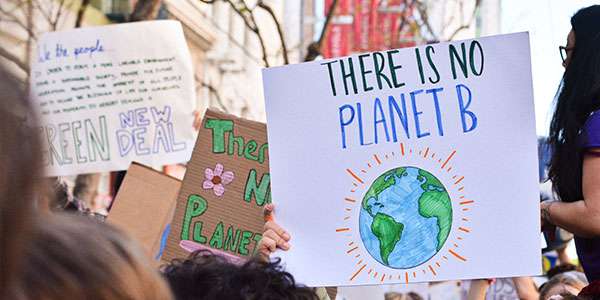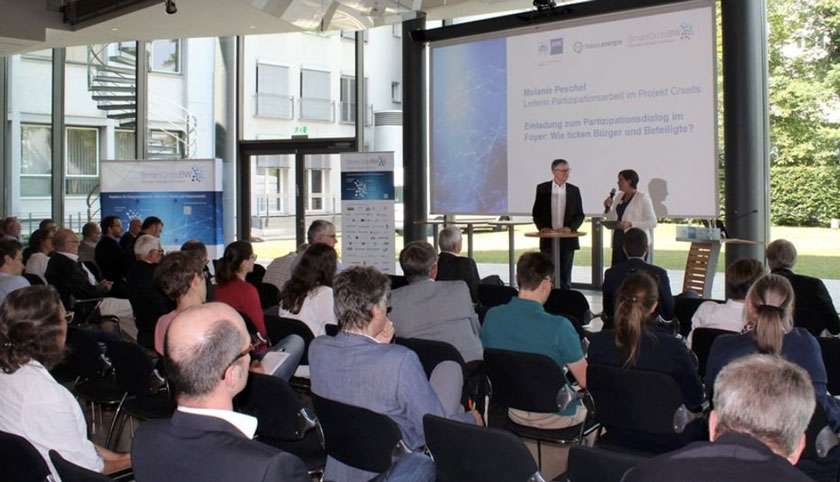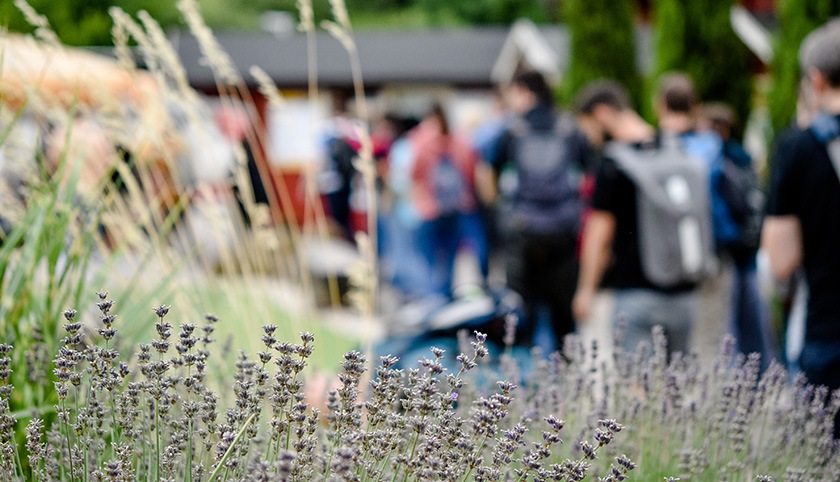Will the digital transformation lead the energy transition to ultimate success?
Since the Fridays for Future demonstrations and the most recent European elections, climate protection has played a major role in public debate. All parties are repositioning the achievement of climate protection goals in their political programmes. But what is the current situation in regard to the necessary energy transition? And what role can “smart neighbourhoods” play in the success of the energy transition? This was the topic of the joint event of the Baden-Württemberg energy networks Smart Grids Platform Baden-Württemberg and fokus.energie at the Karlsruhe Chamber of Commerce and Industry at the beginning of July.
In six presentations, smart neighbourhoods were examined in six presentations in which attendees were ushered through all phases, from the design of the development plan to operation. The presentations demonstrated how smart neighbourhoods have proven themselves in practice and what potential still lies dormant in them.
The energy transition must conquer the cities
Up to this point, the expansion of renewables has been concentrated in rural areas. To further advance the energy transition and achieve the 2050 climate protection goals, the consensus among the speakers was that the energy transition would need to conquer the cities. Smart energy-optimised neighbourhoods are the promising concept for achieving this goal in urban areas. The focus must be on economic efficiency, user-friendliness and conduciveness to efficient grid operations.
Smart neighbourhoods are the key to urban space
Smart neighbourhoods are locally supplied with renewable energy. Suitable neighbourhood energy storage, integrated energy management and sector integration ensure that most of the electricity is either consumed by the residents themselves, converted into heat or used to charge electric cars. The flexibility of the smart neighbourhoods can also be used to stabilise regional power grids.
Smart neighbourhoods offer a number of new business models
Smart neighbourhoods offer great opportunities for municipal utilities to replace or complement their traditional business model of “selling power”. These new business models require technical and energy-industry expertise as well as a local presence that inspires trust. The municipal utilities are already very well positioned in this regard. If they succeed in digitally transforming existing contracting solutions and bundling them with new services, lucrative business models will emerge in smart neighbourhoods and provide three kinds of benefits:
- Meeting climate protection targets for the good of society
- Increasing the quality of life for residents
- New profitable products and services for municipal utilities
Karlsruhe as a climate protection player and exporter of solution concepts
Managing Director of the Karlsruhe Technology Region (TRK) Jochen Ehlgötz highlighted the expertise of the Karlsruhe Technology Region, while Managing Director of egrid applications & consulting GmbH and specialist for planning processes Bernhard Rindt emphasised that the way forward for a smart neighbourhood should ideally be defined by the municipalities at a very early point in the planning process and then specified in detail in documents such as the land-use plan. This is crucial to the success of smart neighbourhood projects.

Jonas Vöhringer of Seven2one GmbH provided an overview of the new business models in the smart neighbourhood and showed the associated design options and business potential for municipal utilities. For example, energy contracting solutions can be used to establish a digital customer relationship with customers and to create a consolidated central database. This is the foundation required for the establishment of additional new services, including mobility offers, online billing, smart homes and other information services.
Climate strike posters
During the break, the BMWi-funded SINTEG showcase project “C/sells” was able to show visitors how awareness of the energy transition can be raised among citizens and stakeholders and how they can be motivated to actively participate.
Smart neighbourhoods in reality
Heinz Hagenlocher of Avat Automation GmbH presented the previously implemented Urbanharbor project in Ludwigsburg, in which an integrated energy infrastructure for smart neighbourhoods was added to a former industrial site.
The Urbanharbor project is a prime example of how is also possible to take advantage of the potential for energy optimisation in existing buildings. Furthermore, this project demonstrates that a smart neighbourhood cannot necessarily be implemented in one go. Instead, it can require an incremental approach.
evohaus and evohaus IRQ GmbH Managing Director Heinz Hanen also demonstrated how energy self-sufficient neighbourhoods can be implemented in new and existing buildings at costs that are socially acceptable. In the inhabited smart neighbourhood in the Mannheim conversion site known as FRANKLIN (formerly Franklin Village), the energy supply system is particularly cost-effective, as development of the energy neighbourhood management was part of the equation from the very beginning. According to Mr Hanen, organising the residents into an energy acquisition community has also proven itself in practice.
Smart neighbourhoods pay off
The event concluded by involving the speakers and the audience in a lively panel discussion that lasted nearly an hour. The consensus at the end of the event was that smart neighbourhoods are highly complex projects due to the many stakeholders. To be successfully implemented, they require wide-ranging, interdisciplinary expertise.
However, the real-life examples demonstrate that smart neighbourhoods pay off in the end.
Image source title: Smart Grids Platform BW | Podium, from left: Moderator Dr Christoph Schlenzig, Melanie Peschel




0 Comments